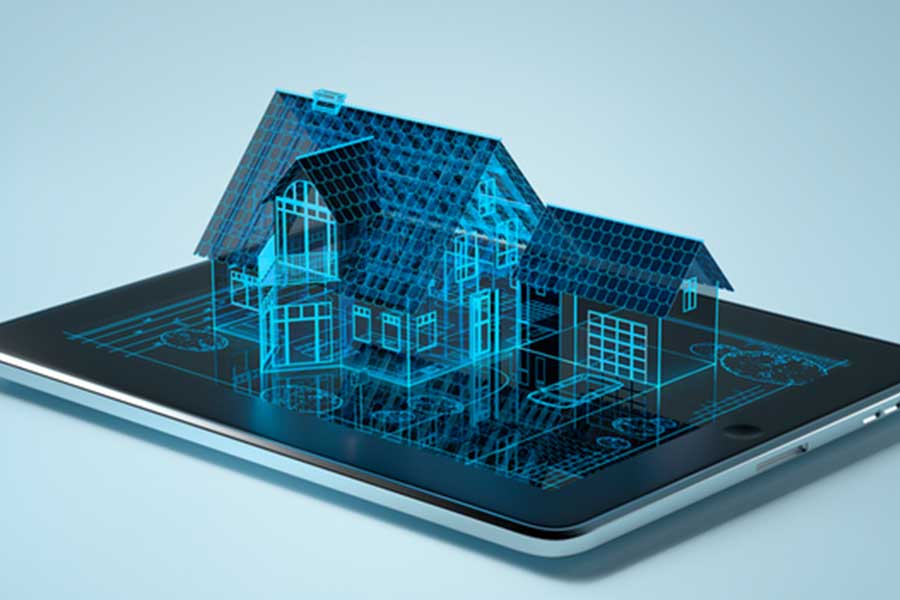Owners look at fast-growing opportunities in industry where they can transform into an outstanding opportunity. Which continues to be the smart home market for residential HVAC contractors.
The smart home industry is expanding at a great pace, not just in household goods but also in homeowners’ adoption. For themselves the numbers speak. A total of 47 percent of millennials have at least one smart product in their house, a category that is just beginning to buy homes. Furthermore, 33 million North American homes rely on smart thermostats for temperature control, according to Statista.
Homeowner Expectations

Much of the smart home focus has traditionally been on thermostats. Initially, they allowed homeowners to control their HVAC system inside and outside the home through the thermostat mobile app via a simple Wi-Fi connection. Now, those same thermostats are able to control homes based on homeowner interaction and trends. They learn behaviors to improve both comfort in the home and efficiency of the HVAC system.
While awareness is certainly increasing, it is still up to the HVAC contractor to educate the homeowners about the benefits that today’s smart home products can offer.
“The old knob thermostats will replace a lot of the new installations we do,” said Scott Merritt, owner of Fire & Ice Heating & Air Conditioning in Columbus, Ohio. Though consumers do not necessarily know the full range of solutions for smart home, they know that much can be remotely operated from a phone app. But we often answer those questions. Fortunately, on many thermostat models these days, that is normal.
While smart homes and thermostats are closely linked in the minds of contractors and homeowners, manufacturers want contractors to realize smart homes are much more than that.
Smart Home: Top Intelligent HVAC System
“Another technology that is increasing in popularity is high-end systems with zoning capabilities,” said Jason Wilson, product manager at Johnson Controls. “York recently launched the new Hx3 Communicating Zoning System, which offers individual temperature and humidity control in up to eight zones in a home.
In addition, we also see smart sensors evolving. One such example is the availability of window sensors that are capable of alerting homeowners if windows are open while their system is running, thus wasting energy. Those same sensors come equipped with abilities to read temperature, humidity, and other air quality measurements — all with the capabilities to tie back into cloud-connected mobile applications for control at homeowners’ fingertips.”
This is one of the few times where the market dictates where it needs the industry to go. Mike Smith, senior marketing manager at Mitsubishi Electric Trane HVAC US, said that in order to keep pace with homeowner expectations, the HVAC industry needs to evolve the approach toward residential HVAC systems. Contractors and salespeople need to be more responsive to homeowners’ desires to keep their homes and families comfortable and secure without making multiple trips to the thermostat.
“This can be achieved with innovative sensors and equipment designed to adjust according to occupancy or climate conditions,” Smith said. “For example, our 3-D i-see Sensor® on the indoor unit scans the room in three dimensions to analyze the temperature profile, then determines how many people are in the room and where they’re located. The system can react to this information by increasing or decreasing the amount of heating and cooling based on the load, and the indoor unit can then direct the airflow either directly to the individuals or indirectly according to preference settings. If the room is vacant, the system can switch to an energy-saving mode. Multiple operating modes are available to automatically maximize comfort, convenience, and cost savings.”
Moving Toward A Mainstream Market
Although the smart home market has already arrived, analysis suggests that in the next three to five years, it will continue to expand. In September 2020, Smart Energy IP, a leading consultancy and consulting company focusing on consumer engagement in energy and infrastructure, published its “Customer Preferences Dictate the Future of Smart Home Business Models: Exploring the Role of Smart Home in the Utility of the Future Business Model” industry report.
They found a few themes:
- While the “cool factor” does drive interest in smart homes, energy reduction solutions top the list of motivators to buy.
- Customers aged 35-54 prefer bundled solutions.
- The majority of customers expect smart home solutions from their utilities.
- Smith is bullish on smart sensors and the future of smart home technology.
Enhanced sensing features, expanded home automation with intelligent appliance and computer integration, and responsive, energy-efficient zoned comfort systems are included in the future of smart HVAC. Personalized comfort, increased indoor air quality, enhanced accessibility, and decreased electricity usage are the advantages for consumers, which are nice for the bottom line and healthier for the world. With those priorities in mind, the production and implementation of smart HVAC systems will continue.